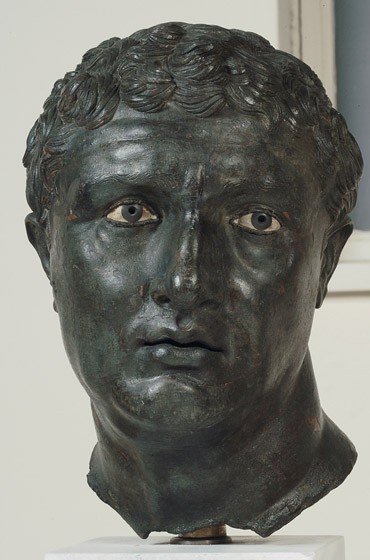Portraiture as we know it today, expressing character and individuality, originated in the Hellenistic period. Unlike the earlier serene and idealized portraits of the Classical age, those of the Hellenistic era emphasize pathos, appealing to viewers’ emotions by conveying an individual’s state of mind or experience of life through facial expression or gestures. The third-century BC poet Poseidippos praised contemporary portraits for “mixing in nothing from the images of heroes . . . but holding straight to the canon of truth.” Bronze was particularly suited to this new approach as it was cast from models made of malleable wax or clay that could easily be worked to capture the specific features and expressions of individuals. Hellenistic bronze portraits are thus remarkably lifelike, often made more so by the addition of marble or glass eyes and copper lips or eyelashes.
Pictured: Portrait of a Man, c. 100 BC; bronze, copper, glass, and stone. Lent by the Hellenic Ministry of Culture, Education, and Religious Affairs, The National Archaeological Museum, Athens
